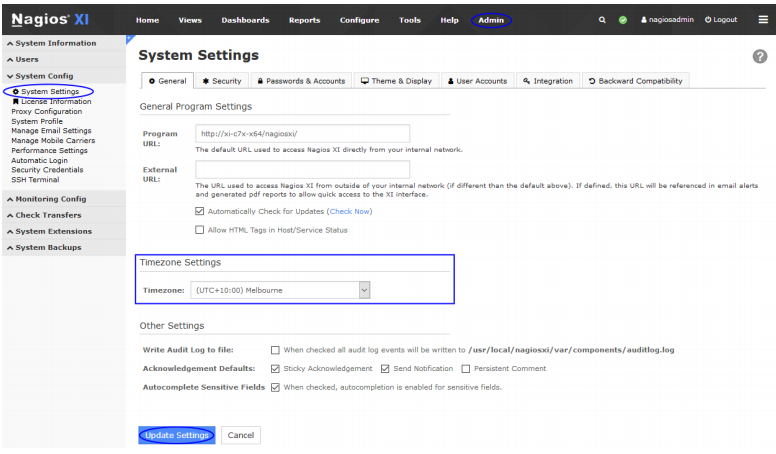Nagios login screen at times redirects to itself after entering the login credentials. It generally happens due to a mismatch in the time zone.
As a part of our Server Management Services, we help our Customers to fix Nagios related errors regularly.
Let us today discuss the possible causes and fixes for this error.
What causes Nagios login screen to redirects to itself
Nagios XI uses cookies to save session state and these are set to expire after 30 minutes. The mismatch in time between the Nagios XI server and the client’s browser causes the cookies to appear expired.
We have noticed that it generally happens when the time set on the Nagios XI server is incorrect.
Nagios login screen redirects to itself – How to fix
Our Support Engineers fix the time on the Nagios XI server and ensure that it is correct. It helps to resolve this issue in most cases.
Timezone Configuration Using Nagios XI GUI
Nagios XI has a dedicated configuration section in the web GUI which does the timezone configuration.
- Navigate to Admin > System Config > System Settings
- Find the Timezone Settings section (on the General tab)
- From the Timezone drop-down list select the timezone
- Click the Update Settings button

Setting the System Timezone
Even after setting the time zone via GUI, our support specialists have noticed date/time and timezone issues in some cases.
In such cases, we update the system time to resolve the issue. The steps to update the system time varies based on the operating system used.
RHEL 7|CentOS 7|Oracle Linux 7
We use the timedatectl command to configure the timezone. To display a list of available timezones, use the command:
# timedatectl list-timezonesThe timezones are listed by country/city and include daylight savings time adjustments.
Then we use the timedatectl command to configure the timezone:
# timedatectl set-timezone America/Los_AngelesRunning the timedatectl command by itself will produce a summary, which will have the following line:
Time zone: America/Los_Angeles (PST, -0800)
Debian|Ubuntu
The dpkg-reconfigure command helps to configure the timezone. Use the following command to set the timezone:
# dpkg-reconfigure tzdataSelect the appropriate region and this completes the required steps.
PHP Timezone
Next, we will configure the php.ini for the timezone set above. The location of the php.ini file differs depending on the operating system/version. The following command will determine the location:
# find /etc -name php.iniWe will then open the file with a suitable text editor and change the timezone value as given below
date.timezone = America/Los_AngelesFinally, we will restart the Apache service:
RHEL 7|CentOS 7|Oracle Linux 7
# systemctl restart httpd.service
Ubuntu 14
# service apache2 restart
Checking The System Date/Time
We will now check the timezone information by checking the XI system time by executing the following command:
# dateIf the timezone is correct, but the date and/or time are incorrect we could set the proper time using the date:
# date MMDDhhmmCCYYWhere MM is the month, DD is the day, hh is the hour, mm is minute, and CCYY is the year.
Restart Database Services
Whenever we change the system time or timezone, we need to restart the database services so that they use the new date/time.
Use the postgresql command only if you are using Nagios XI pre version 5.x OR you have upgraded to version 5.x from a previous version.
RHEL 7|CentOS 7
# systemctl stop nagios.service
# systemctl stop ndo2db.service
# service postgresql restart
# systemctl restart mariadb.service
# systemctl start ndo2db.service
# systemctl start nagios.service
Debian|Ubuntu 16/18
# systemctl stop nagios.service
# systemctl stop ndo2db.service
# service postgresql restart
# systemctl restart mysql.service
# systemctl start ndo2db.service
# systemctl start nagios.service[Need any further assistance in fixing Nagios errors? – We’re available 24*7]
Conclusion
In short, a mismatch in the time zone can cause the Nagios login screen to redirects to itself after entering the login credentials. Today, we saw how our Support Engineers fix this error.




0 Comments